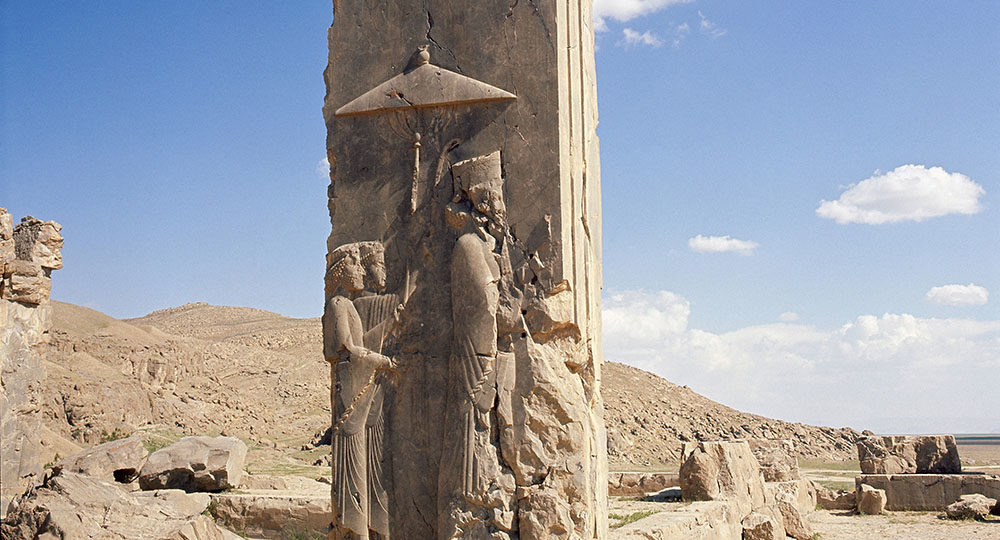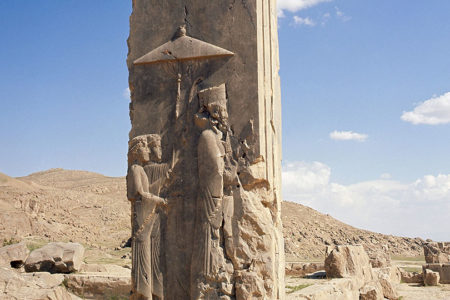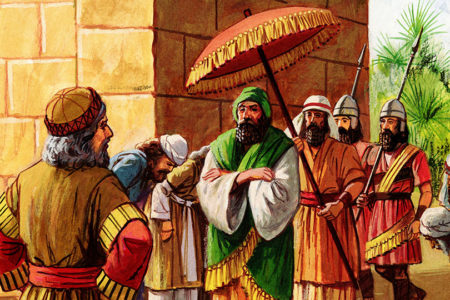The Megillah Begins Esther 1—3
In March 2011 a German freighter owned by a French company and flying a Liberian flag was intercepted by Israeli commandos. The crew of the ship Victoria had no clue they were carrying concealed cargo. Beneath the bags of cotton and lentils lay nearly 50 tons of Iranian weapons bound for Gaza. The secret Israel Defense Forces (IDF) operation prevented Iran and its president, Mahmoud Ahmadinejad, from supplying (in violation of a UN Security Council resolution preventing illicit trafficking) the terrorist group Hamas with weapons. And it also prevented the murder of many Jewish people. There was reason for Jewish people to celebrate.
It was somewhat ironic that a few days later, Israel celebrated another secret operation that saved even more Jewish lives. That story is recorded in the book of Esther, and the celebration is the feast of Purim. Though separated by 2,500 years, both events were instigated by haters of the Jewish people: the wicked Haman and Ahmadinejad, both from Persia, which today is Iran.
Although God’s name is not mentioned in the book of Esther, His presence is unmistakable; and His control and care for His people is evident even in a distant land. Their destiny was in His hands then, as it is today.
The Jewish people were brought to the area during the Babylonian Captivity in the sixth century B.C. Even after Cyrus the Great came to power in Persia, which overthrew Babylon, many Jewish people remained despite his decree allowing them to return to their homeland. Amazingly, only 49,897 Jewish people chose to return, led by Zerubbabel (Ezra 2:64–65).
God had removed them from their Promised Land because of disobedience to Him (Jer. 29:10). But to many, life in exile seemed a better option than the uncertainty of life back in Israel, even though it meant facing danger, anti-Semitism, and possibly death.
Before the Ayatollah Khomeini deposed the shah of Iran in 1979, 100,000 Jewish people still lived in Iran/Persia, a figure that fluctuated moderately through the years. However, when Khomeini Islamicized the country, a massive Jewish exodus occurred.
It is hard to imagine that Jewish people live in Iran today, yet 25,000 remain. They are forbidden to learn Hebrew or attend Jewish day school, and Jewish children are required to attend school on the Jewish Sabbath. Why do they stay? A Jewish Iranian interviewed by Israel National News sounded as though he were living in the days of Cyrus: “People are afraid of the unknown,” he said.
Mordecai the Benjamite and his cousin and ward, Esther, were a part of the large Jewish population that remained in Persia. The scroll (Hebrew, megillah) of Esther tells the story.
The Careless King
Ahasuerus (Xerxes) ruled Persia from 485 to 464 B.C. His kingdom, all 127 provinces, stretched from India to Ethiopia (Est. 1:1) and through Asia Minor, Egypt, and parts of coastal Africa. To demonstrate “the riches of his glorious kingdom and the splendor of his excellent majesty,” Ahasuerus threw a six-month-long party to end all parties (v. 4). The wine flowed freely. Imbibing was not compulsory, as it sometimes was; but guests could drink “according to each man’s pleasure” (v. 8).
Evidently, many became intoxicated, including the careless king. “Merry with wine” (v. 10), he lost control of his tongue, bragging boisterously about his wife Vashti’s attractiveness and demanding that she appear and “show her beauty” (v. 11).
Vashti, hosting her own party for the women (v. 9), refused. (Some commentators believe the request was for her to come naked.) Ahasuerus’s advisors became concerned. If the king’s wife refused to listen to him, why should their wives listen to them (vv. 16–17)? Ahasuerus, now furious, agreed. On the advice of his wise men, he offered the “royal position to another who is better than she” (v. 19). Queen Vashti was to be replaced.
Mordecai, “a certain Jew” (2:5), “had brought up Hadassah, that is, Esther, his uncle’s daughter, for she had neither father nor mother” (v. 7). In compliance with the king’s command, the strikingly beautiful Esther was taken into “the house of the women” (v. 9). Before she left her home, Mordecai told her to tell no one she was Jewish. She lived in the king’s house a full year, bathing in oil of myrrh and perfumes to prepare her for the one night she would spend with Ahasuerus (v. 12). That night would decide her fate. She would either become queen or be relegated to the king’s harem forever.
Behind the scenes, God was working on Esther’s behalf. Scripture says, “The king loved Esther more than all the other women, and she obtained grace and favor in his sight” (v. 17). In God’s providence, Esther became the new queen of Persia.
Haman: An Ancient Ahmadinejad
Before Esther’s time, God had commanded King Saul of Israel, also a Benjamite, to kill the Amalakite King Agag, all his people, and all their livestock. Instead, Saul spared Agag “and the best of the sheep, the oxen, the fatlings, the lambs, and all that was good, and [was] unwilling to utterly destroy them” (1 Sam. 15:9). This displeased the Lord, and the prophet Samuel told Saul, “I will not return with you, for you have rejected the word of the LORD, and the LORD has rejected you from being king over Israel” (v. 26).
Some scholars believe Haman was a descendant of Agag, whom King Saul failed to kill and whom Samuel the prophet then “hacked . . . in pieces before the LORD in Gilgal” (v. 33). However, Bible scholar John A. Martin disagrees:
Because Haman was an Agagite, some have supposed that he was descended from Agag, king of the Amalekites (1 Sam. 15:8). However, it seems unlikely that a high-ranking Persian official would be related to a west Semite who lived 600 years earlier. Archeologists have uncovered an inscription which indicates that Agag was also the name of a province in the Persian Empire. This probably explains why Haman was called an Agagite.1
Whatever the case, Haman became the Jewish people’s enemy.
Mordecai “sat within the king’s gate” (Est. 2:21), a place of honor and influence. Yet, he was required by law to pay homage to Haman, a noble or royal advisor (3:2) who clearly desired preeminence.
Mordecai refused. “Haman was filled with wrath” (v. 5) and not only wanted Mordecai dead but also “sought to destroy all the Jews who were throughout the whole kingdom of Ahasuerus—the people of Mordecai” (v. 6).
So Haman offered the king a deal he could not refuse. He promised to put 10,000 talents of silver into the treasury if the king would agree to get rid of “a certain [unnamed] people” whose “laws are different from all other people’s, and [who] do not keep the king’s laws” (v. 8). The king agreed to Haman’s proposal, gave Haman his signet ring, and let him issue the decree (v. 12).
Written in Ahasuerus’ name, the decree was “to destroy, to kill, and to annihilate all the Jews, both young and old, little children and women, in one day, on the thirteenth day of the twelfth month, . . . Adar” (v. 13). Persian law emphatically stated that once a law was enacted, not even the king could change it (Dan. 6:8). This was a death sentence for virtually all the Jewish people in the world.
Like Haman, Ahmadinejad tries to make it look beneficial to Iran and the world if Israel were removed from the earth. And though it may seem to some that God is silent to the imminent threat Iran poses to His Chosen People, be assured that these times, too, are in His hands.
ENDNOTES
- John A. Martin, “Esther,” The Bible Knowledge Commentary, ed. John F. Walvoord and Roy B. Zuck (Wheaton, IL: Victor Books, 1985), 1:705.







